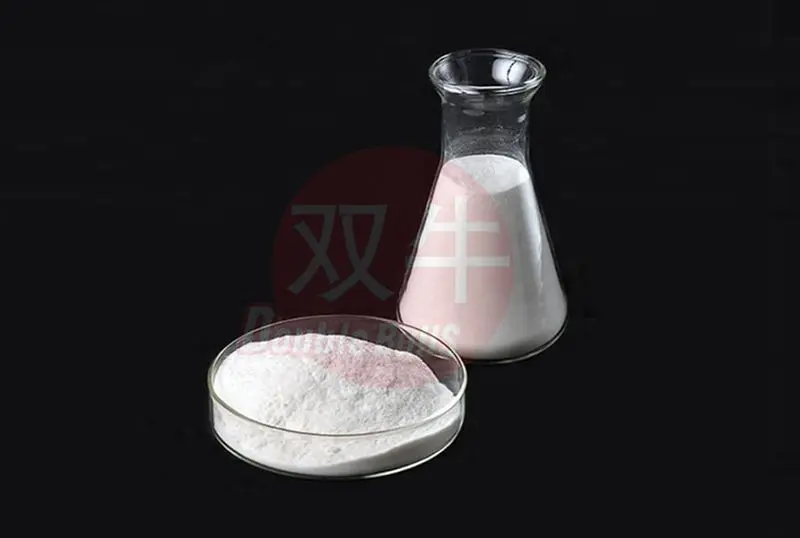cellulose etherWhen using hydroxypropyl methyl cellulose (HPMC), carboxymethyl cellulose (CMC), etc. as thickeners and filtrate reducers in coalbed methane fracturing fluids, it is necessary to optimize performance and construction processes to reduce damage to the coal seam (such as decreased permeability, pore blockage, etc.). Specific measures are as follows:
1、 Reduce the residue and blockage of cellulose ether
Coal seams have the characteristics of low porosity, low permeability, and easy pollution. If cellulose ether remains or forms insoluble substances, it will block the coal rock pores, leading to a decrease in gas production capacity. The coping strategies include:
Choose easily degradable cellulose ether
Adopting biodegradable or enzymatic hydrolysis typecellulose ether(such as introducing easily breakable groups such as ester bonds and amide bonds), after fracturing, it rapidly degrades into small molecules under the action of formation water, microorganisms, or enzymes, and is discharged with the backflow fluid to reduce solid residue.
Control molecular weight: Use cellulose ethers with medium to low molecular weight (such as viscosity of 500-2000 mPa · s), which have shorter molecular chains, are less likely to entangle and block pores, and have a faster degradation rate.
Optimize concentration and dissolution uniformity
Strictly control the concentration of cellulose ether (usually 0.1% -0.5%) to avoid a sudden increase in viscosity of the fracturing fluid due to high concentration, which may result in residue in the coal seam gaps and make it difficult to flow back.
Adopting a step-by-step dissolution process (dispersing first and then stirring, or adding dispersants) to ensure complete dissolution of cellulose ether, avoiding the formation of undissolved "fish eyes" (local aggregates), and reducing pore blockage.
2、 Reduce damage to the wettability of coal seams
The surface of coal rock is hydrophobic, and the hydrophilicity of cellulose ether may alter its wettability, leading to water locking effect (water retention in pores) and reducing gas permeability. The solutions include:
Introducing hydrophobic modified functional groups
Introducing hydrophobic groups such as long-chain alkyl groups (such as C8-C18) and aryl groups into cellulose ether molecular chains through etherification reaction reduces their hydrophilicity and minimizes interference with coal rock hydrophobicity. For example, hydrophobic modified HPMC (HM-HPMC) can maintain the hydrophobicity of coal rock surface while thickening, alleviating water locking.
Compound water-resistant lock additive
By compounding with surfactants such as fluorocarbon surfactants and non-ionic defoamers, the surface tension of the fracturing fluid can be reduced (from 70 mN/m to 30-40 mN/m), promoting the discharge of water from coal seam pores and reducing retention.
3、 Reduce chemical damage to coal rock structure
Clay minerals (such as montmorillonite) in coal seams are prone to swelling when exposed to water, and the presence of cellulose ethers may exacerbate this process, leading to the destruction of the coal seam skeleton. The coping strategies include:
Compound anti clay swelling agent
When compounded with inorganic salts such as potassium chloride and ammonium chloride, or cationic polymers such as polyquaternary ammonium salts, it hinders the hydration expansion of clay minerals. For example, the combination of 0.5% cellulose ether and 2% KCl can reduce the clay swelling rate from 30% to below 5%.
Control the pH value of fracturing fluid
cellulose etherIt is prone to degradation under acidic conditions, while excessive alkalinity may corrode coal and rock. By adding buffering agents such as sodium carbonate and citric acid, the pH of the fracturing fluid is controlled within the neutral range of 6-8, reducing chemical damage to coal rock and cellulose ether itself.
4、 Optimize the flowback efficiency of fracturing fluid
The incomplete backflow of fracturing fluid is the key to causing coal seam damage, and the backflow rate needs to be improved by regulating the properties of cellulose ether
Introducing a breaking mechanism
Using temperature sensitive cellulose ether (such as automatic viscosity reduction at formation temperatures of 60-80 ℃), or compounding with demulsifiers such as ammonium persulfate and enzyme preparations, the viscosity of the fracturing fluid is reduced through heating or chemical reactions after fracturing (from 500 mPa · s to below 50 mPa · s), making it easier to flow back.
Adjust rheological properties
Choose shear thinning cellulose ether (such as a combination of xanthan gum and cellulose ether), which reduces viscosity under high shear during fracturing (facilitating pumping), restores viscosity after stopping the pump (supporting cracks), and reduces viscosity again under the action of airflow shear during backflow, improving backflow efficiency.
summary
The damage of cellulose ether to coal seams mainly comes from residual blockage, changes in wettability, clay swelling, and difficulty in backflow. By selecting easily degradable and hydrophobic modified types, optimizing concentration and dissolution processes, compounding anti water lock and anti expansion additives, and combining gel breaking and rheological control, damage can be significantly reduced while ensuring the thickening, sand carrying, and filtration reduction performance of fracturing fluid, which is suitable for the special needs of coalbed methane mining.


TEL:+86 (0311) 8444 9786
Email:sales@double-bulls.com
Email:Export@double-bulls.com
Address:No.9 Weisi Road, Jinzhou City Eco-nomic Development Zone, Shijiazhuang City, Hebei Province.

Website

Brochure

Video